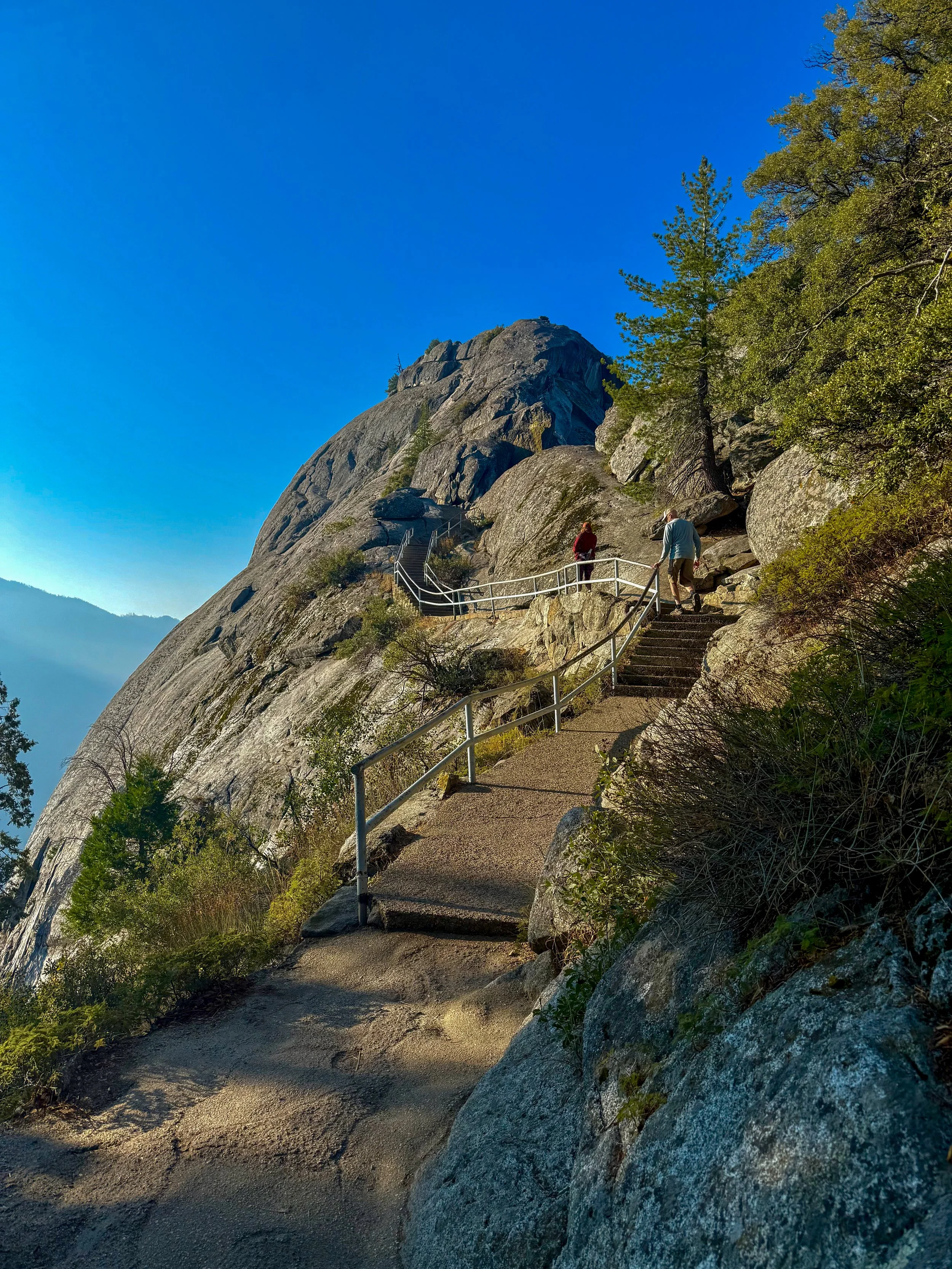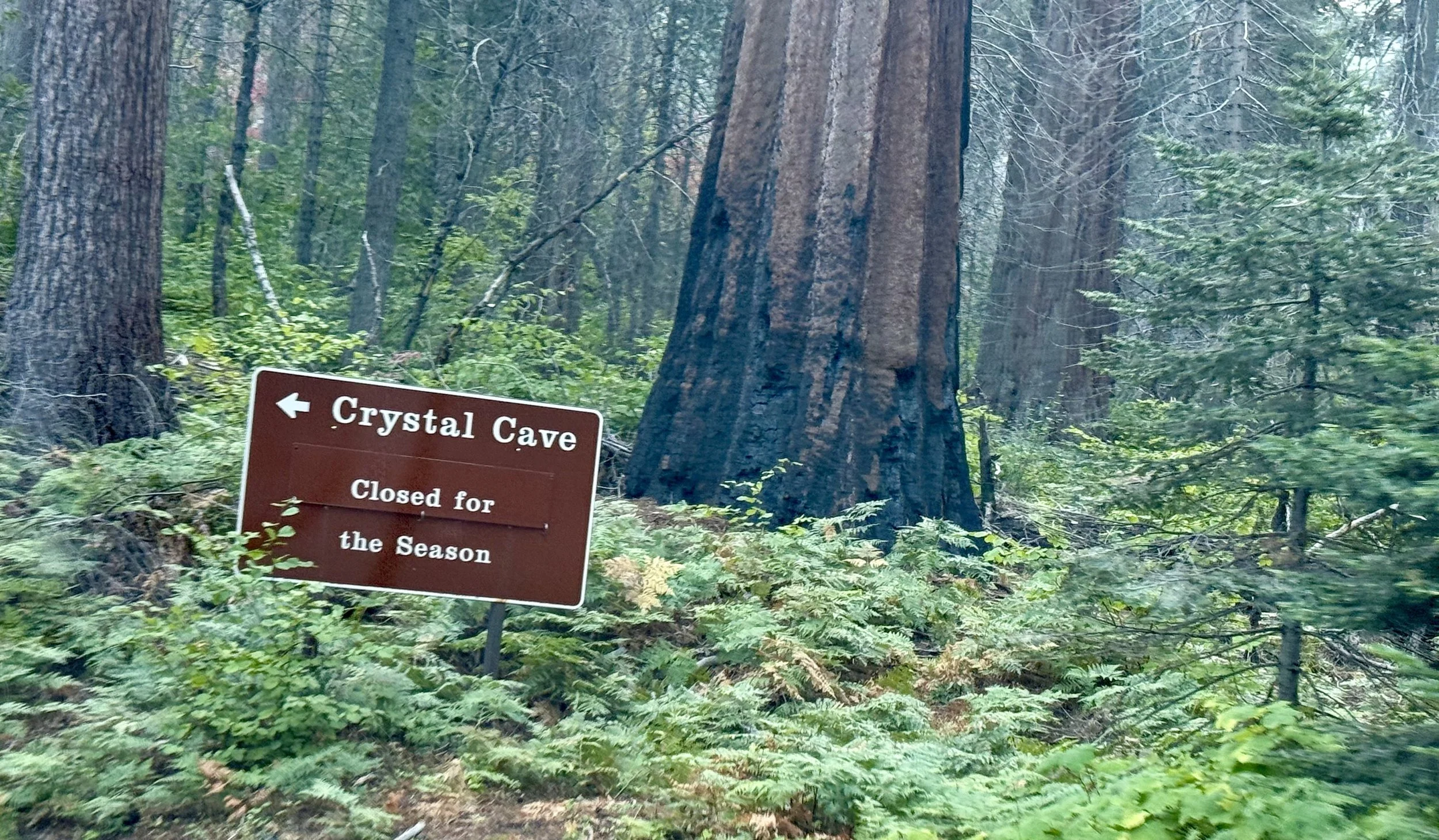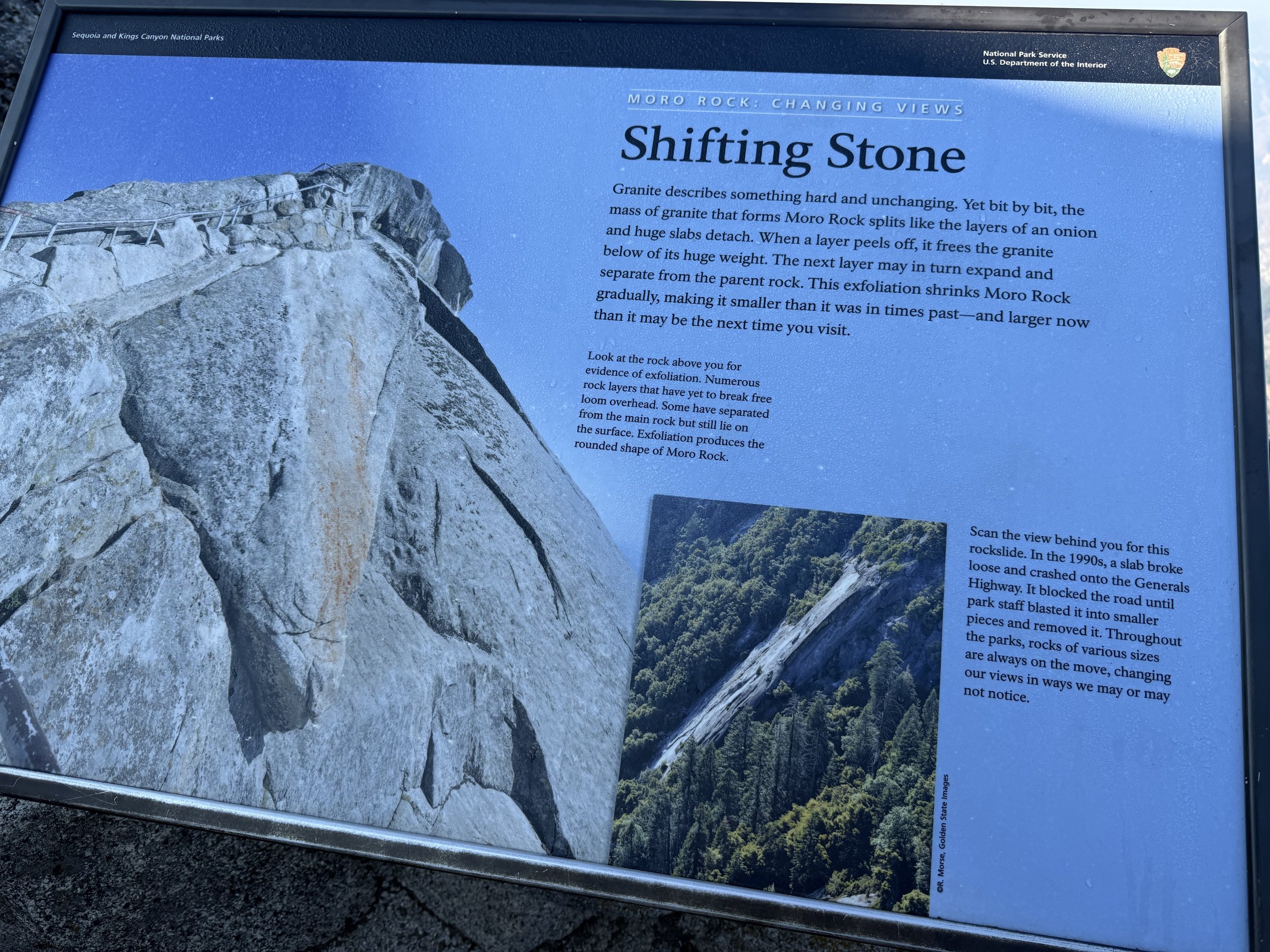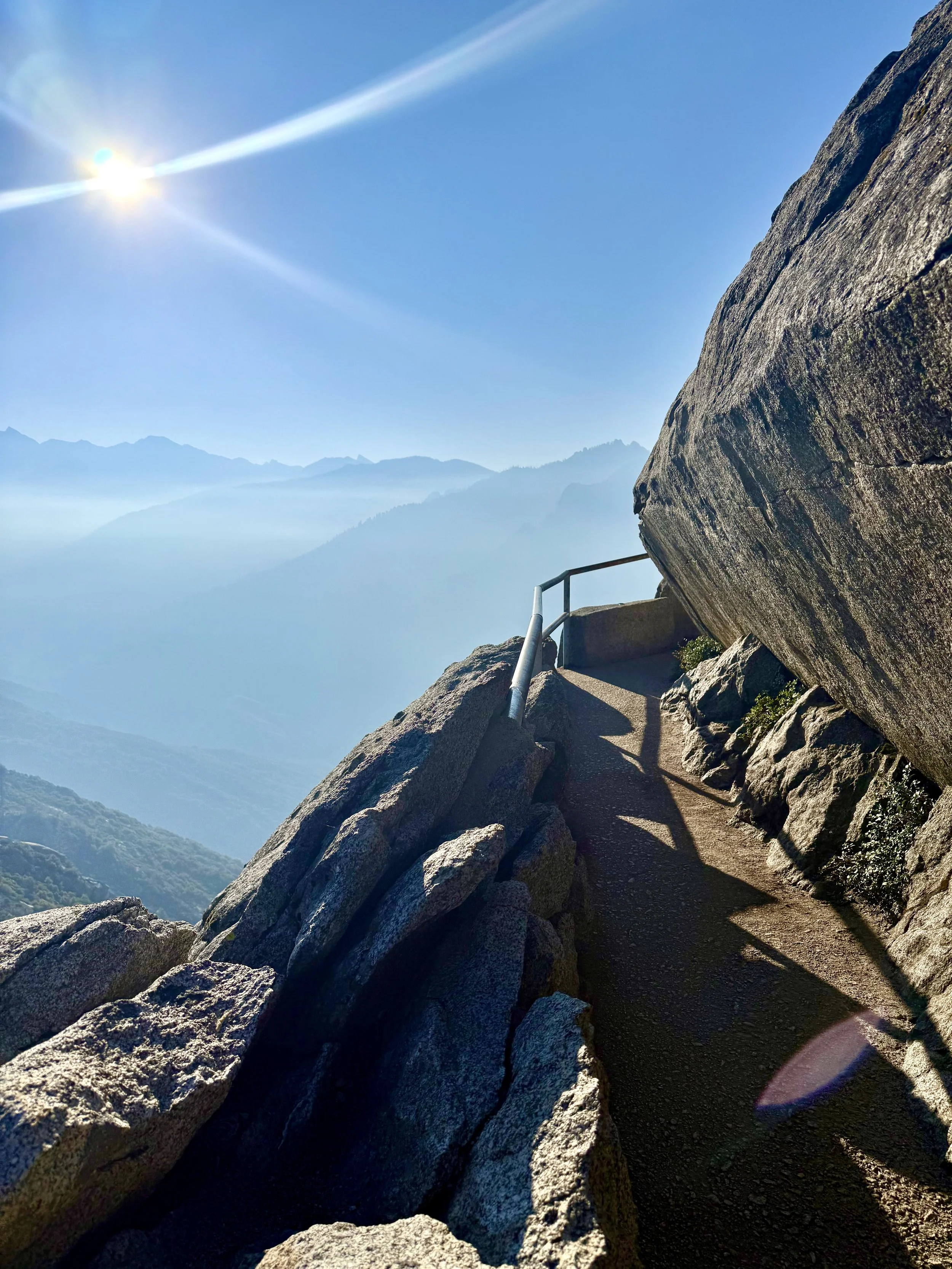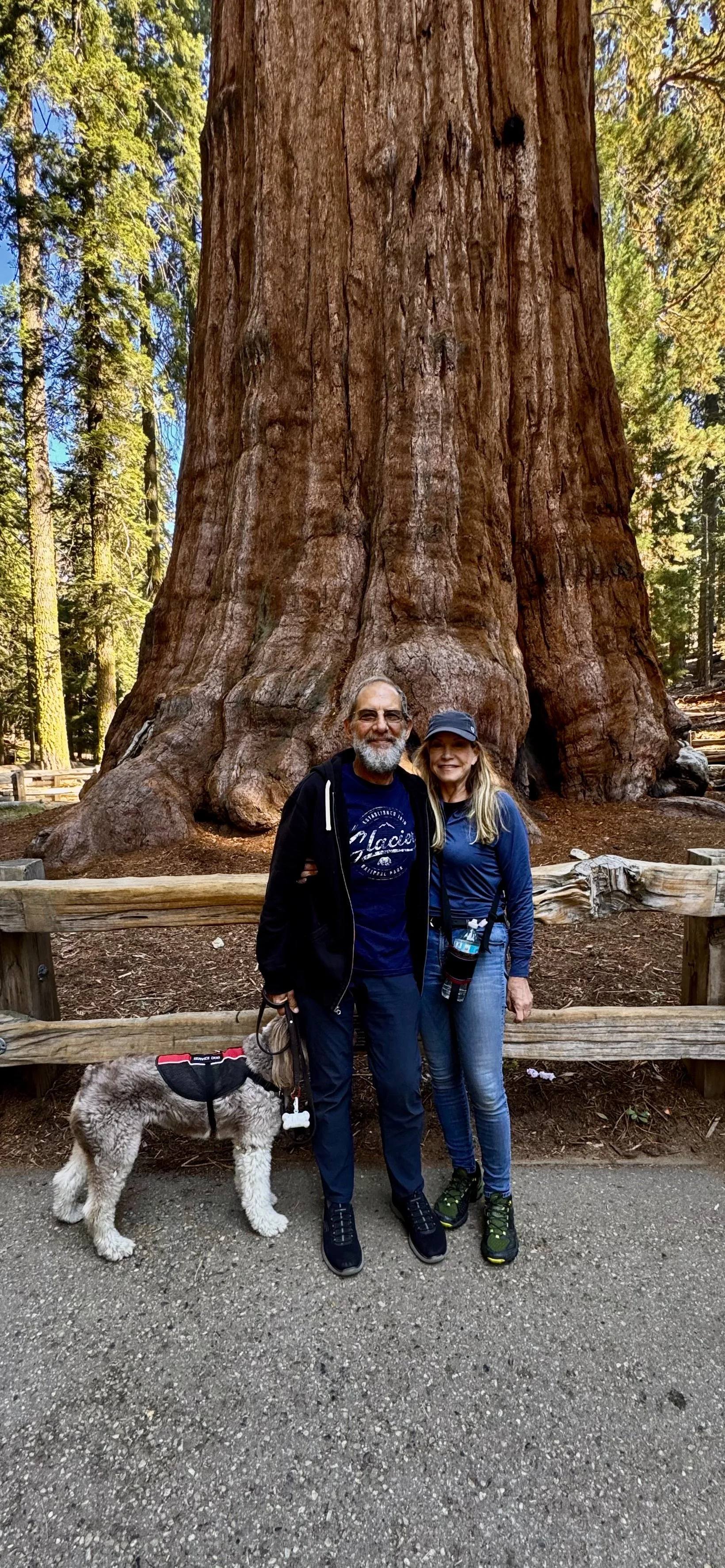
Sequoia National Park
California
From Yosemite, we drove south into Sequoia National Park, entering through Ash Mountain and the small town of Three Rivers. My goal this year was simple but symbolic: climb Moro Rock.
We reached the park gate around 3:45 p.m., passing the Foothills Visitor Center just as the light began to soften. Too late for the climb, but too early to call it a day, we wound upward to Tunnel Rock, snapped a few photos beneath its granite arch, and turned back toward town in search of a place to sleep.
Everywhere inside the park—Wuksachi Lodge, cabins, even campground sites—was booked solid. So we pointed Bessie downhill and landed at the Comfort Inn we’d passed earlier. Not glamorous, but clean, budget-friendly, with dependable Wi-Fi and hot morning coffee.
The next morning, we retraced our route up the Generals Highway, the air cooler and the traffic thinner. Wild turkeys strutted across the road like they owned it. By 8am we were standing at the base of Moro Rock, ready to climb. The granite staircase wound skyward, hugging the cliff’s edge in dizzying switchbacks. Every few steps, the view widened—first forest, then ridgeline, then endless layers of Sierra blue. At the top, the wind howled and the world felt infinite.
Afterward we continued to Crescent Meadow and the iconic Tunnel Log, where cars can still drive straight through a fallen sequoia. Further on stood the park’s giant monarch—the General Sherman Tree, the largest living thing on Earth. Standing beneath it, craning my neck, I felt small in the best possible way.
By late afternoon, we rolled out of the mountains toward Lone Pine, California, at the base of Mount Whitney. A jumping off point to reach Death Valley.
